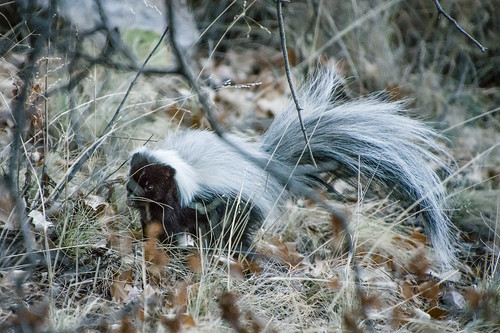“Can we learn to look more thoughtfully, and therefore see more fully the natural vibrancy that is all around us in cities? And also along the way see what vibrancy our cities may be lacking? It is a vibrancy that weaves—or should weave—together nature and people and built form in ways that make cities rich—rich in biodiversity, human society, sustainability, resilience, and livability.” (David Maddox, Imaging the Urban Wild)
Over 80% of Canadians live in urban centres and our focus tends to be on the built environment, but our towns and cities are constructed on and in the natural environment. The juxtaposition of natural and man-made can be dramatic, but there are also opportunities for integrating the two, for appreciating our wild neighbours and our living architecture.
Juxtaposition
“Why is it that we call ourselves human and all other living things nature?” (Patrick M. Lydon)
The juxtaposition of natural areas and the built environment can shock and yet the distinction is entirely artificial. The challenge is to integrate the natural and the built environment in ways that respect the value and needs of all urban residents.
Integration
“It is the wilderness come back again, a lagoon with our city reflected in its eye.” (Spirit of Place: Great Blue Heron, William Stafford)
Mike Houck is the Executive Director of the Urban Greenspaces Institute in Portland, Oregon, and has been promoting urban wildlife refuges since 1982. He fought hard to protect the Heron Pointe Wetland.
“I was paddling my kayak around Ross Island in downtown Portland and was blown away by the juxtaposition of the Great Blue Heron colony on the downstream tip of Ross Island with the new condominium towers at South Waterfront, Portland’s newest neighborhood on the west bank of the Willamette. . . . after two years of planning the Willamette River Greenway, the residents of the condos can now actually observe Bald Eagle picking young herons out of their nests. Not for the squeamish, perhaps, but pretty damn impressive in the heart of downtown Portland.” (Mike Houck)
Wild Neighbours
“Most of us will never see a polar bear, will never see a lion. Modern day society is so disconnected from nature. Urban wildlife provides a bridge to that gap.” (Bertie Gregory)
Toronto residents have a love/hate relationship with urban raccoons. The raccoons topple garbage bins and enter homes in search of food. Over half of Toronto residents are in favour of euthanizing them to reduce the population. And, yet, those same residents erected a memorial shrine complete with cards, photographs, and flowers for a dead raccoon that lay on the sidewalk for over 12 hours.
New York City’s Parks Department has launched an ad campaign recognizing raccoons as true New Yorkers - intelligent and always looking for the best real estate.
Shared Lives
“Three bows, three cucks. I bow back.
Are we friends for fat and kitten kibble?
Did I help you through last winter,
you with short tail feathers?” (Shorty, the Crow, Tricia Knoll)
“In a quest to live ecologically
a man seeks to know nature
in different ways
To know a tree as he knows a good friend
living, growing, sensing
renders betrayal of the tree improbable
Can we meet a tree
as we would another human?
Well, of course
we can” (Patrick Lydon)
Do you have a favorite tree, one that you’ve watched grow and develop, enjoyed the scent of lime blossoms in the spring or the bright yellow leaves in the fall? Trees are living architecture and play an important role in shaping our neighbourhoods. The avenue of elm trees along Spadina Crescent in Saskatoon is admired by all who drive by. The SOS Elms Coalition invites residents to follow their tree tour showcasing some of the oldest and largest trees in Saskatoon.
Art Imitates Life and Life Imitates Art
There are times when art imitates life and when life imitates art. Here are two examples.







